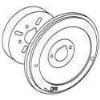How often do you think of the maintenance required to keep your home systems and appliances up and running? If you are busy like most homeowners, probably not often enough. Here are a few tips to keep things running smoothly.
Roof: Clean all debris out of the gutters . Check for missing or damaged shingles. Cut all tree limbs away or back from the roof to prevent damage.
Structure: Check to make sure there are no areas around the foundation that are holding or “ponding” water. Make sure downspouts extend out of flowerbeds and away from the foundation. Are there any exterior cracks or siding damage that need attention?
Air Conditioning System maintenance: To ensure efficient operation, check filters monthly. Remove debris from overflow pans and around outside condensers.
Heating System maintenance: Visually inspect exhaust vent for rust, damage or deterioration.
Electrical System maintenance: To help prevent power outages, make sure there are not too many appliances plugged into one circuit.
Smoke Detectors: Check and test quarterly. Replace all batteries and backup batteries yearly.
Fireplaces: Have the flu and inserts cleaned to prevent creosote build-up if used often. Make sure the chimney cap is secured w/o holes.
Plumbing System maintenance: Check for leaks under cabinets and “running” toilets. Toilet paper should be the only paper product flushed down a toilet. Clean all faucet aerators. Address any sluggish drains and clean out any clogs.
Washer maintenance: Make sure your machine is level to prevent uneven wearing of parts. To adjust, turn the legs clockwise to lower them or counter-clockwise to raise them.
Dryer maintenance: Clean the lint screen after each load and clean out the inside dryer vents and outside dryer caps.
Water Heater maintenance: Drain and flush sediment from the tank twice a year.
Range/Oven maintenance: If you have a self-clean oven, run it twice yearly or more frequently if needed.
Refrigerator maintenance: Clean the interior shelves, shell and gaskets every three months.
Garbage Disposal maintenance: To clean, feed a full tray of ice cubes through it while running cold water. You can also add lemon/lime slices or baking soda to help with odors.
These are just a few suggestions offered for your home systems and appliances. If you do not feel comfortable in safely and properly attempting any that may apply to your systems or appliances, just call a qualified professional. Proper maintenance goes a long way in extending the life of your systems and major expenses down the road.






You must be logged in to post a comment.